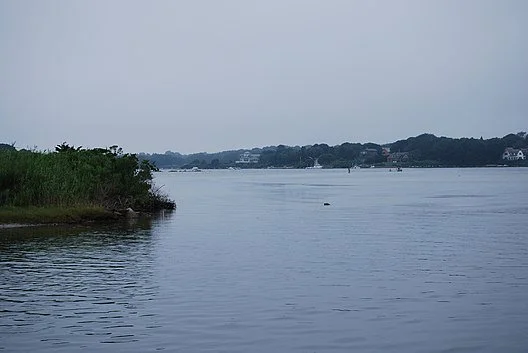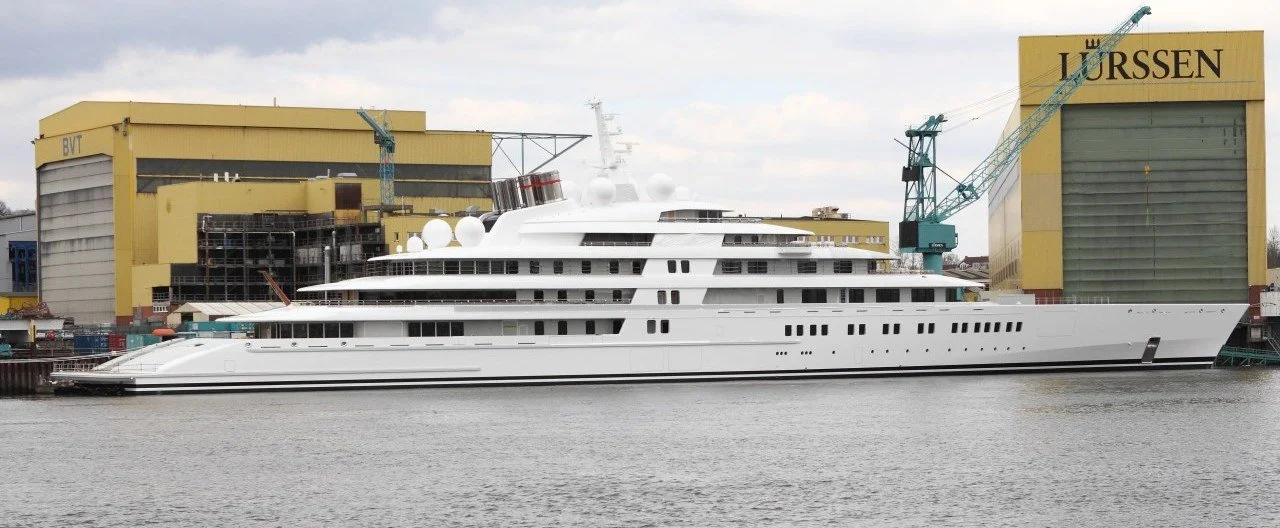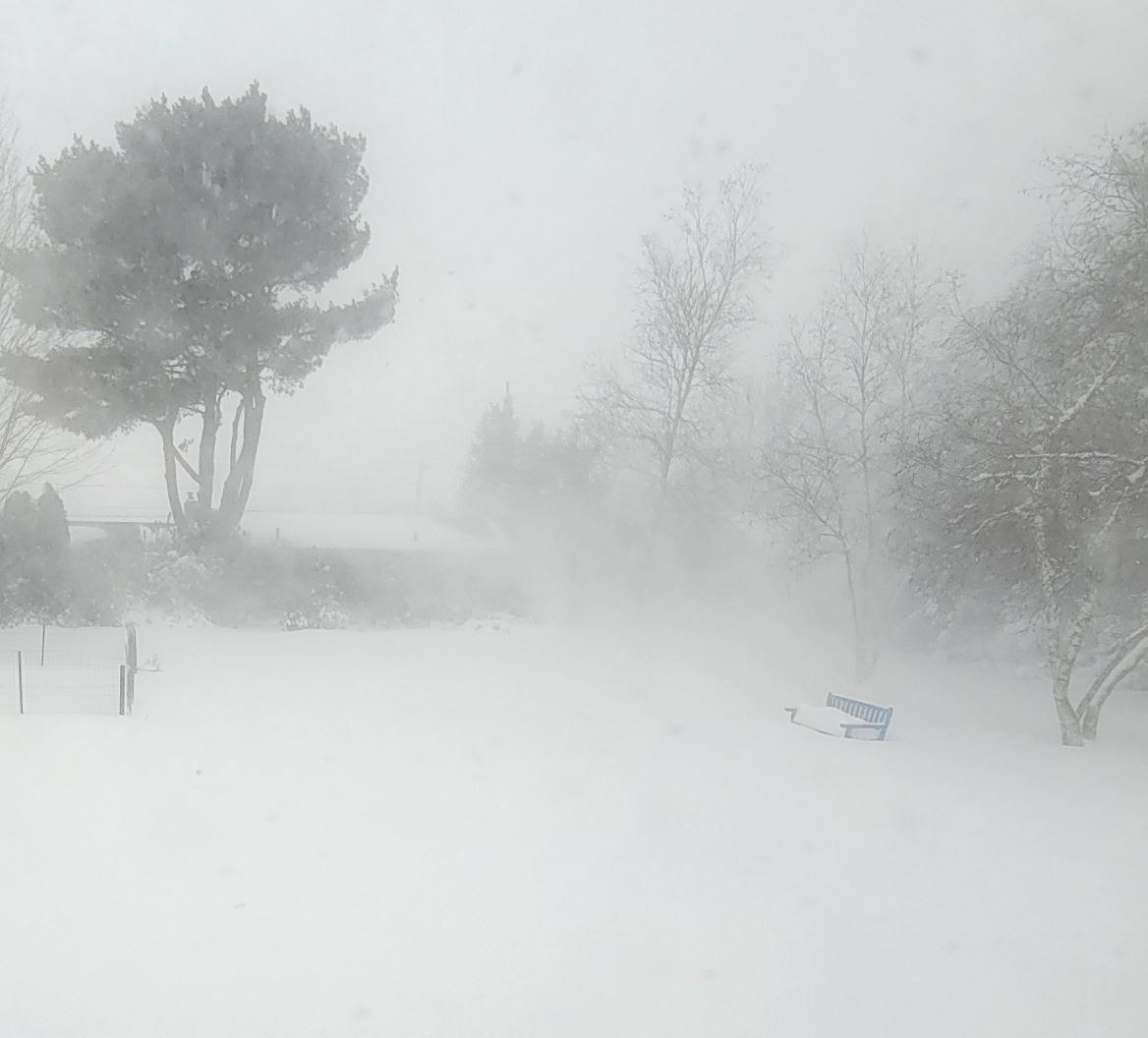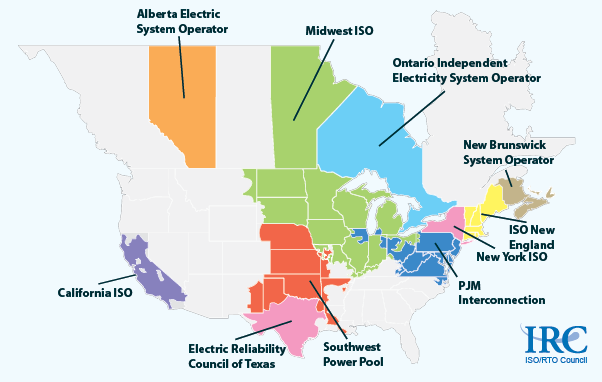
‘There be dragons’
The Babcock House in Charlestown, built in the late 17th or early 18th Century.
—- Photo by JERRYE & ROY KLOTZ, M.D.
The town’s Quonochontaug section had an iron-mining operation financed by Thomas A. Edison in the 1880s. There were iron particles in the form of black sand on the beach there that could be separated out with magnets and melted to produce iron. But the venture collapsed after cheaper iron was later discovered.
Adapted from Robert Whitcomb’s “Digital Diary,’’ in GoLocal24.com
For such an amusingly tiny place, Rhode Island has intense localisms. Consider Kevin Gallup’s remarks. He’s a former police officer and now director of the Emergency Management Agency in Charlestown, in the exurban south of the state.
Mr. Gallup ominously warned, in comments about PVD Food Truck Events coming to Charlestown, that “things morph’’ and town residents “might not appreciate” having people from Providence come to town for events.
“If we’re going to have people showing up from Providence and hanging out that we don’t know…along with our children…some people aren’t going to appreciate that and I can tell you that for a fact. So you’re going to need that police detail. Sorry the world needs to be this way, but these things need to be thought out.”
There’s a long tradition of seeing cities as a source of menace, including in a “city state’’ such as Rhode Island. Do Charlestown people feel safer with visitors from smaller city New London, Conn., 34 miles from Charlestown, than with people from Providence, 48 miles away?
Remember those old maps that had the Latin phrase “hic sunt dracones” (“there be dragons”) for dangerous and/or unexplored regions? One wonders how familiar Charlestown people are with the capital of their state, and how many would say they’re all too familiar with it. People can be very provincial around here, and I’ll bet plenty of people from South County have never been to Providence.
Quonochontaug Pond.
Frank Carini: Working to reduce environmental impact of ocean racing sailboats
From ecoRI News (ecori.org)
While the United States flails about trying to reduce its enormous share of world-altering climate pollution, one part of the transportation/recreational sector is routinely ignored: boating.
Yachting and sailing are steadily gaining in popularity, so an urgency to act is essential if greenhouse-gas emissions are to be significantly reduced.
Yes, sailing burns little fossil fuel, but the resources consumed to build some of these vessels is swelling.
For instance, over the past decade, the carbon footprint of 60-foot International Monohull Open Class Association (IMOCA) racing boats has grown by nearly two-thirds, from 340 to 550 tons — the equivalent of driving an average car 1.4 million miles, according to the 11th Hour Racing Team.
“This is an overall trend we see in pretty much any industry, driven by performance we have accelerated too fast in the wrong direction, and are only just waking up to reality,” according to Damian Foxall, sustainability program manager for the 11th Hour Racing Team. “The need to reduce our emissions in the marine industry is urgent — 50% by 2030, and that’s just eight years away. We are far away from that right now.”
The 11th Hour Racing Team is sponsored by 11th Hour Racing, a Newport, R.I.-based nonprofit that works with the sailing community and maritime industries to “advance solutions and practices that protect and restore the health of our ocean.”
Late last year the team published a report about the importance of building a more sustainable ocean racing boat and better understanding the industry’s environmental impact. It showed performance doesn’t need to be sacrificed to build a more environmentally friendly boat.
“Business as usual is no longer an option. While the performance sailing sector and much of the leisure marine industry is geographically centered in the global North and a few other well-off regions, we live in a fragile bubble of prosperity,” according to the report. “This alternative reality does not reflect either the reality for most of the world’s citizens, or the availability of the earth’s resources.
“Inherently tied to the ongoing growth of global economies, we would need 1.7 Earths each year just to maintain the situation for the average global citizen. Scaled to the typical lifestyles associated with the marine industry this is more like 5+ Earths each year: a growing annual debt,” the report says.
The 128-page report includes a detailed study of material life cycles and alternative composites, such as flax to replace ubiquitous virgin carbon fiber. About 80 percent of greenhouse gas emissions in a boat build are associated with the use of composite materials, most notably carbon fiber, which is perfect for racing because it is light and stiff. Reducing the use of this material and others would significantly lessen climate emissions tied to the building of a new racing boat, according to the 11th Hour Racing Team.
In fact, the 11th Hour Racing Team and its partners are advocating for radical change across the marine industry to transform the way boats are built. They believe that only by “prioritizing sustainability along with performance, can the marine industry take urgent action to fight climate change.”
Foxall recently told ecoRI News that sustainable sourcing and using as much renewable energy as possible are the two biggest things racing teams can do right now to lower their carbon footprints.
The 11th Hour Racing Team, for instance, now leases an electric support vessel during races, which has lowered climate emissions from both a transportation and manufacturing perspective.
Foxall said rule changes would require sailing teams to incorporate more sustainable materials into their design and build. He noted, for example, reused carbon fiber is mostly avoided because the virgin material makes for better performance. But if rules required every team to use recycled fiber, no team would have an advantage.
“In our sport, rules define what the boats are … as much as one team or a couple of teams or even an event might want to improve the footprints, that cannot happen until the rules incentivize it,” Foxall said. “And the rules for the longest time have incentivized performance, whether it is carrying more sacks of coal or corn from Australia to Europe or transporting more people from Europe to North America or now racing faster and going faster through the water. It’s all about performance.”
He added the sport can no longer “just make decisions based purely on performance. We need to be taking into account the direct and indirect impacts” on the environment.
The December report recommends establishing minimum standards on sourcing, energy, waste, and resource circularity; defining a threshold for carbon emissions based on life cycle assessment (LCA) data; incentivizing the marine industry to use its inherent capacity for innovation to focus on sustainability; and setting an internal price for carbon emissions.
Amy Munro, sustainability officer for the 11th Hour Racing Team, noted the building of a racing boat is a complex process involving a number of stakeholders, materials, and components.
“You need to break it down in detail to fully understand what are the major impacts,” according to Munro. “This is why we have meticulously measured the impact of every step in the design and build process of our new boat and conducted a life cycle analysis that helps to uncover underlying issues.”
Last month, Charlie Enright, 11th Hour Racing Team skipper, spoke at the U.N.-supported One Ocean Summit in Brest, France, to highlight key findings of the organization’s “Sustainable Design and Build Report,” notably the importance of industry-wide collaboration to push sustainable innovation to align with the Paris Agreement.
“Within our sport, for too long we have chased performance over a responsibility for the environment and people,” the Bristol, R.I., native told an audience of experts, politicians, activists, and decision-makers. “We must work together to reduce the impact of boat builds, adopt the use of alternative materials like bio-resins and recycled carbon, lobby for a change to class and event rules to reward sustainable innovations, and support races and events that are managed with a positive impact on our planet and people.”
Foxall noted about 50 percent of sailors are onboard when it comes to making their sport more sustainable. He said it is their responsibility to bring the others up to speed about the impacts of the climate crisis.
In an email to ecoRI News, Enright noted the sport’s awareness of climate and environmental issues is “definitely increasing.” He said big events such as The Ocean Race and the Transat Jacques Vabre have “strong sustainability policies” in place, including plastic-free race villages, onboard waste calculation initiatives, and efforts to educate teams and fans about these matters. “This is relatively new in our sport.”
The Ocean Race also runs an ocean science program in partnership with 11th Hour Racing, collecting data on water temperature, salinity, and other potential climate change impacts. The Transat Jacques Vabre uses the 11th Hour Racing Team’s Sustainability Toolbox, which, among other things, commits to efforts to limit waste, use renewable energy and reduce emissions wherever possible, as a framework for its own sustainability program.
“Of course there are those who need a bit more convincing on the importance of it,” Foxall said. “But, quite frankly … kids coming home from school today know what the issue is.”
In 2019, greenhouse-gas emissions from ships and boats in the United States alone totaled 40.4 million metric tons of carbon dioxide equivalent. Globally, bulk carriers are the main source of shipping/boating climate emissions. Some 90 percent of world trade is carried across the world’s oceans by some 90,000 marine vessels. Carbon dioxide emissions from these vessels are largely unregulated.
Last year, the Environmental Protection Agency (EPA) did adopt exhaust emission standards for marine diesel engines installed in a variety of marine vessels, ranging in size and application from small recreational boats to large ocean-going ships.
While the shipping industry is responsible for a significant proportion of global climate emissions — if global shipping were a country, it would be the sixth-largest producer of greenhouse gases behind China, the U.S., Russia, India and Japan — the climate impacts of the recreational powerboat industry, most notably yachts, are considerable.
The propulsion systems on many yachts are arguably the least-efficient modes of transportation ever devised. The typical 40- to 50-foot yacht guzzles fuel.
U.S. recreational boaters spend about 500 million hours annually cruising fresh and salt waters. In 2010, more stringent EPA emissions standards for marine engines, both in-board and outboard, went into effect. But, unlike cars, private boats are not inspected. They can be checked by the Coast Guard or law enforcement, but there is no annual emissions check.
Many recreational boats and some jet-propelled watercraft have two-stroke engines. Conventional two-stroke engines produce about 14 times as much climate pollution as four-stroke engines.
Last year new U.S. powerboat sales surpassed 300,000 units for the second consecutive year, closing 2021 about 6 percent below record highs in 2020 and some 7 percent above the five-year sales average, according to the National Marine Manufacturers Association. In 2020, annual U.S. sales of boats, marine products and services totaled $49.3 billion, up 14 percent from 2019.
The oceans play an essential role in keeping atmospheric carbon dioxide in balance by absorbing about 30 percent of the CO2 that is released, from all sources. This blue carbon sink, however, has been working overtime since the Industrial Revolution began belching fossil fuels into the atmosphere.
The ocean, though, can only swallow so much of this colorless gas. When carbon dioxide is absorbed by seawater, chemical reactions occur that increase the acidity of the water through a process known as ocean acidification.
Acidifying marine waters are bad news for marine life with calcium carbonate in their shells or skeletons, such as oysters, corals, crabs, scallops, and mussels. Studies have found that more acidic salt waters make it more difficult for them to develop their hardened protection.
As of early last month, the recorded amount of carbon dioxide in the atmosphere was a tick away from 418 parts per million (ppm) — well beyond the 350 ppm that climate scientists have deemed safe for humans, never mind most of the planet’s other living inhabitants.
“While the situation is extremely urgent and ‘business-as-usual’ is clearly no longer an option, it is still technically possible to close your eyes and look away,” Enright wrote. “This is why we have to act now and we have to create our own pressure. What we need is a radical change and one of the most important parts here is that the marine industry works together to achieve it.”
Frank Carini is co-founder and senior reporter of ecoRI News.
Azzam, at 592.5 feet, was the longest superyacht, as of 2020.
— Photo by ChrisKarsten
Plastic Providence
This work by Rhode Island artist Jim Bush can be seen at the Providence Art Club March 6-25.
Here’s his description of his background:
“Jim Bush grew up in Cambridge, Mass., and graduated from Kenyon College with a double major in Studio Art and Political Science. He is an award-winning artist, member of the Providence Art Club and a former member of the Sakonnet Artists Cooperative, in Tiverton, R.I. His editorial cartoons appeared in The Providence Journal from 1994-2012. Nationally his cartoons have appeared in the Washington Post National Weekly Edition, The Dallas Morning News and he has drawn for the Tribune Media Services College Press Syndicate.
“In 2007, Jim purchased a building in the historic district of downtown Warren, R.I. and spent a year converting it into an art studio and gallery. Jim focuses now on his fine art painting, primarily acrylic and watercolor. He enjoys painting animals, seascapes, landscapes, farm scenes, architecture -- life around him. His style continues to reflect his cartooning foundation, often displaying his subjects in a light-hearted and off-beat way.’’
Llewellyn King: Utilities urgently need to add transmission
In Seekonk, Mass., during the height of the Jan. 29 blizzard. Many people in southeastern Massachusetts lost power in the storm, in which winds gusted to hurricane force.
Logo of Independent System Operator, which oversees the region’s electric grid.
WEST WARWICK, R.I.
It has become second nature. You hear that bad weather is coming and rush to the store to stock up on bottled water and canned and other non-perishable foods. You check your flashlight batteries.
For a few days, we are all survivalists. Why? Because we are resigned to the idea that bad weather equates with a loss of electrical power.
What happens is the fortunate have emergency generators hooked up to their freestanding houses. The rest of us just hope for the best, but with real fear of days without heat.
It happened most severely in Texas in February 2021; during Winter Storm Uri, which lasted five days, 250 people died. Recently, during the Blizzard of 2022, on Jan. 28-29, 100,000 people in Massachusetts endured bitter cold nights when the electricity failed. There were more power failures in the most recent ice storm.
There are 3,000 electric utilities in the United States. Sixty large ones, like Consolidated Edison, NextEra Energy, Pacific Gas and Electric, and the Tennessee Valley Authority, supply 70 percent of the nation’s electricity. Nonetheless, the rest are critical in their communities.
All utilities, large and small, have much in common: They are all under pressure to replace coal and natural gas generation with renewables, which means solar and wind. No new, big hydro is planned, and nuclear is losing market share as plants go out of service because they are too expensive to operate.
The word the utilities like to use is resilience. It means that they will do their best to keep the lights on and to restore power as fast as possible if they fail due to bad weather. When those events threaten, the utilities spring into action, dispatching crews to each other’s trouble spots as though they were ordering up the cavalry. The utilities have become very proactive, but if storms are severe, it often isn’t enough.
Now, besides more frequent severe weather events, utilities face the possibility of destabilization on another front, due to switching to renewables before new storage and battery technology is available or deployed.
The first step to avoid new instability -- and it is a critical one -- is to add transmission. This would move electricity from where it is generated in wind corridors and sun-drenched states to where the demand is, often in a different time zone.
Duane Highley, president and CEO of Tri-State Generation and Transmission Association, which serves four states in the West from its base in Westminster, Colo., says new west-east and east-west transmission is critical to take the power from the resource-rich Intermountain states to the population centers in the East and to California.
“Most existing transmission lines run north to south. They aren’t getting the renewables to the load centers,” Highley says.
Echoing this theme, Alice Moy-Gonzalez, senior vice president of strategic development at Anterix, a communications company providing broadband private networks that make the grid more secure and efficient, sees pressure on the grid from renewables and from new customer demands (such as electrical vehicles) as electrification spreads throughout society.
“The use of advanced secure communications to monitor all of these resources and coordinate their operation will be key to maintaining reliability and optimization as we modernize the grid,” Moy-Gonzalez says.
Better communications are one step in the way forward, but new lines are at the heart of the solution.
The Biden administration, as part of its infrastructure plan, has singled out the grid for special attention under the rubric “Build a Better Grid.” It has also earmarked $20 billion of already appropriated funds to get the ball rolling.
Industry lobbyists in Washington say they have the outlines of the Department of Energy plan, but details are slow to emerge. Considered particularly critical is the administration’s commitment to ease and coordinate siting obstacles with the states and affected communities.
Utilities are challenged to increase the resilience of the grid they have and to expand it before it becomes more unstable.
Clint Vince, who heads the U.S. energy practice at Dentons, the world’s largest law firm, says, “We aren’t going to reach the growth in renewables needed to address climate without exponential growth in major interstate transmission. And sadly, we won’t succeed with that goal on our current trajectory. We will need significant federal intervention because collaboration among the states simply hasn’t been working within the timeframe needed.”
Better keep the flashlights handy.
Llewellyn King is executive producer and host of White House Chronicle, on PBS. His email is llewellynking1@gmail.com, and he’s based in Rhode Island and Washington., D.C.
Linda Gasparello
Co-host and Producer
"White House Chronicle" on PBS
Mobile: (202) 441-2703
Website: whchronicle.com
Llewellyn King: Electrification and the Great American reset
Independent (electric grid) system operators and regional transmission operators
WEST WARWICK, R.I.
It is underway. It has huge momentum, and it will change everything we do — work, leisure, health care, education, use of resources — and, as a bonus, how the world sees us.
It is the Great American Reset, where things will be irreversibly changed. It is a seminal reset that will shape the decades to come, just as the New Deal and World War II shoved the clock forward.
The reset is being driven in part by COVID-19, but in larger part by technology and the digitization of America. Technology is at the gates, no, through the gates, and it is beginning to upend the old in the way that the steam engine in its day began innovations that would change life completely.
Driving this overhaul of human endeavor will be the digitization of everything from the kitchen broom to the electric utilities and the delivery of their vital product. Knitting them together will be communications from 5G to exclusive private networks.
President Biden’s infrastructure proposals could speed and smooth the innovation revolution, facilitate the digital revolution, and make it fairer and more balanced. Biden’s plan will fix the legacy world of infrastructure: roads, bridges, canals, ports, airports, and railroads. It will beef up the movement of goods and services, supply chains, and their security, even as those goods and services are changing profoundly.
But if Biden’s plan fails, the Great American Reset will still happen. It will just be less fair and more uneven — as in not providing broadband quickly to all.
Technology has an imperative, and there is so much technology coming to market that the market will embrace it, nonetheless.
Think driverless cars, but also think telemedicine, carbon capture and utilization, aerial taxis, drone deliveries, and 3D-printed body parts. Add new materials like graphene and nano-manufacturing and an awesome future awaits.
We have seen just the tip of digitization and have been reminded of how pervasive it is by the current chip shortage, which is slowing automobile production lines and thousands of manufactures. But you might say, “You ain’t seen nothing yet.” The future belongs to chips and sensors: small soldiers in mighty armies.
Accompanying digitization is electrification. Our cars, trucks, trains, and even aircraft and ships are headed that way. Better storage is the one frontier that must be conquered before the army of change pours through the breach in a great reshaping of everything.
Central to the future — to the smart city, the smart railroad, the smart highway, and the smart airport — is the electric supply.
The whole reset future of digitization and sensor-facilitated mobility depends on electricity — and not just the availability of electricity going forward, but also the resilience of supply. It also needs to be carbon-free and have low environmental impact.
An overhaul of the electric industry’s infrastructure, increasing its resilience, is an imperative underpinning the reset.
The Texas blackouts were a brutal wake-up call. Job one is to look into hardening the entire electric supply system from informational technology to operational technology, from storm resistance to solar flare resistance (see Carrington Event), from catastrophic physical failure to failure induced by hostile players.
The electric grid needs survivability, but so do the data flows which will dominate the virtual utility of the future. It also needs a failsafe ability to isolate trouble in nanoseconds and, essentially, break itself into less vulnerable, defensive mini-grids.
Securing the grid is akin to national security. Indeed, it is national security.
Electricity is the one indispensable in the future: The future of the great reset.
Klaus Schwab, the genius behind the World Economic Forum, called this year from his virtual Davos conference for a global reset to tackle poverty and apply technology and business acumen to the human problems of the world. We are on the cusp of going it alone.
In the end, the route to social mobilization is jobs. The Great American Reset will throw these off in an unimaginable profusion, as did the arrival of the steam engine a little over 300 years ago.
On Twitter: @llewellynking2
Llewellyn King is executive producer and host of White House Chronicle, on PBS. He’s based in Rhode Island and Washington, D.C.
The New England electric grid is managed by ISO New England from Holyoke, Mass., whose skyline is seen here. Note the clock tower of City Hall and the Mount Tom Range in the background,










